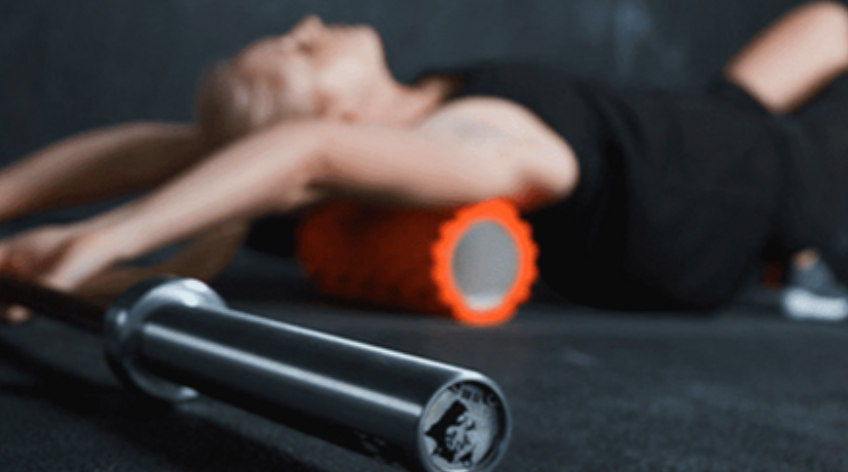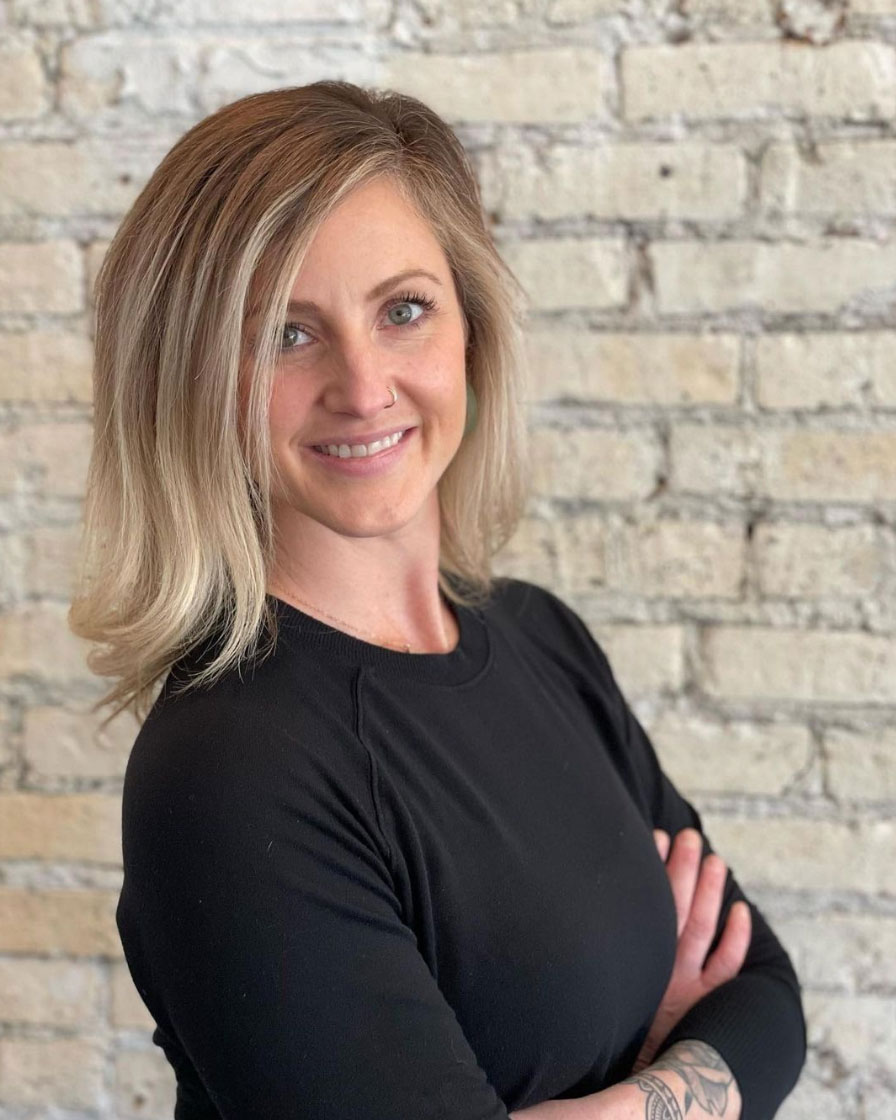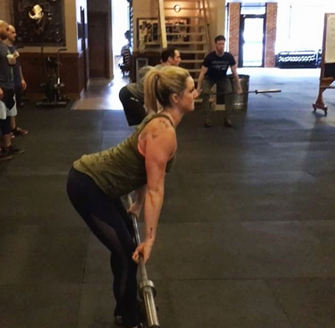Sarah Hughes PT, DPT, OCS, CF - L2 has been practicing PT since 2007 and opened her private practice, Arrow Physical Therapy in 2016. She now owns and operates Arrow remotely while residing in the Chicago area and practicing at Outlier Physical Therapy. Her specialties include dance medicine, the CrossFit and weightlifting athlete and conditions of the hip and pelvis such as femoroacetabular impingement and labral tears. Dr. Hughes earned a BS in exercise science from Gonzaga University and a DPT from the University of Washington, she wrote and instructs Weightlifting and Functional Fitness Athletes.
Mobility. What is it and how can we get more of it?? In the CrossFit world, athletes can be really fixated on mobility.
- This feels tight.
- That feels restricted.
- I can’t squat below parallel because my ankles are tight.
- I can’t press fully overhead because my lats are locked up.
- I know I just need to foam roll more.
- I’ve been doing this mobility program but I still can’t make progress

Don’t let these athletes fool you. They may be strong and look capable in their functional fitness, but often there is a REASON they feel tight, and it’s not because they need more passive motion. Many CrossFit athletes spend their warm-up time lying on foam rollers, stretching with heavy resistance bands, static stretching, and using percussion guns and other mobility tools.
But, what IS mobility? Mobility is defined as the ability of a joint to move actively through a range of motion. Mobility is about controlling your body through a full range of active movement; much different than passively stretching into a position. And, mobility can only be achieved with strength training, neuromotor retraining, appropriate exercise prescription and PRACTICE. Keep these athletes in your sights as they perform the exercises. Don’t get caught giving them too much freedom to only see you for manual work and then do a home program alone. No online program that they can purchase will ever replace your education and ability to help them with mobility drills.
Are your patients stretching and stretching without the increased mobility they are looking for? Are you doing manual work that is targeted and effective but only getting you so far with them? Try some stability drills and strength training exercises! In the Weightlifting and Functional Fitness Athletes - Remote Course we will look at different CrossFit requirements and what these athletes need. HINT: it's not more foam rolling!!
Weightlifting and Functional Fitness Athletes

Course Dates: March 4, May 13, and October 14
Price: $295
Experience Level: Beginner
Contact Hours: 9
Description: When it comes to Crossfit and Weightlifting, opinions are divided among Physical Therapists and other clinicians. Why is it that these sports cause such strong differences among rehab professionals? In this half-day, remote continuing education course, instructor Sarah Haran PT, DPT, OCS, CF-L2 looks at the realities and myths related to Crossfit and high-level weight-lifting with the goal of answering “how can we meet these athletes where they are in order to keep them healthy, happy and performing in the sport they love?"
This course will review the history and style of Crossfit exercise and Weightlifting, as well as examine the role that therapists must play for these athletes. Common orthopedic issues presented to the clinic will be examined. Labs will introduce and practice the movements of Crossfit and Weightlifting, discussing the points of performance for each movement. The practitioner will not only learn how to speak the language of the athlete but will experience what the movement feels like so that they may help their client to break it down into its components for a sport-specific rehab progression. The goal of this course is to provide a realistic breakdown of what these athletes are doing on a daily basis and to help remove the stigma that this type of exercise is bad for our patients. It will be important to examine the holes in training for these athletes as well as where we are lacking as therapists in our ability to help these individuals. We will also discuss mindset and culture issues such as the use of exercise gear (i.e. straps or a weightlifting belt), body image, and the concept of "lifestyle fitness". Finally, we will discuss marketing our practices to these patients.

Instructor Sarah Hughes, PT, DPT, OCS, CF - L2 sat down with The Pelvic Rehab Report to answer a couple of questions about treating the Crossfit and weightlifting community. Dr. Hughes earned a BS in exercise science from Gonzaga University and a DPT from the University of Washington.
Sarah's specialties include dance medicine, the CrossFit and weightlifting athlete, and conditions of the hip and pelvis such as femoroacetabular impingement and labral tears. She began coaching other PTs who wanted to start their own practices in 2017 and co-founded Full Draw Consulting with her partner Dr. Kate Blankshain.
Sarah teaches Weightlifting and Functional Fitness Athletes, which s scheduled for August 7th and October 15th of this year.
What are three things you wish you knew when you first started treating the athletic community?
First, I wish that I had had the confidence to treat these athletes the way I saw fit earlier in my career. For a long time, I felt weird treating CrossFit athletes in the clinics I worked in because I felt that my peers were judging me. My colleagues (and many PTs at the time) were wary about the sport and believed it was dangerous for patients. This is a viewpoint I am working to change in our profession.
Secondly, I wish I knew more about how to scale movements in a way that is relevant to the patients and the stimulus they are striving for. For example, if a patient wants to be able to do kipping pull-ups in a workout, giving them banded strict pull-ups as a substitute is not the only option. What about the metabolic conditioning part of the equation? What about looking at the volume and how that is impacting the tissue of concern? This is a big topic that we discuss in my course.
And finally, I wish I knew that being an effective therapist for these athletes does not mean being the top athlete in the gym. In fact, just as with coaching, you do not have to be a great athlete to be a great PT. Again, this is something that I want to change as far too few physical therapists are comfortable treating these or advertising that they treat these athletes because they are not Crossfit athletes (or are not ELITE Crossfit athletes) themselves.
What lesson have you learned in a course, from an instructor, or from a colleague or mentor that has stayed with you?
One important lesson that has stayed with me came from a colleague in Seattle who started her business a year before I started mine. She told me that I needed to listen to my gut when it came to treating these athletes. She reminded me that my experience with CrossFit as a sport, as an athlete, as a coach, and as a PT put me in a position to be an expert on how to help these folks. What I did not need was to allow other physical therapists to sway my thinking and cause me to doubt myself by insisting that we should not be condoning the sport. TRUST YOUR GUT. If you think you are doing what is right for the patients, you are. You might not be right for every patient and that is OK! I am certainly not the right therapist for everyone, but I am indeed right for the community I serve.
Weightlifting and Functional Fitness Athletes - Remote Course

When it comes to Crossfit and Weightlifting, opinions are divided among Physical Therapists and other clinicians. In this half-day, remote continuing education course, instructor Sarah Haran PT, DPT, OCS, CF-L2 looks at the realities and myths related to Crossfit and high-level weight-lifting with the goal of answering “how can we meet these athletes where they are in order to keep them healthy, happy and performing in the sport they love?"
This course reviews the history and style of Crossfit exercise and Weightlifting, as well as examines the role that therapists must play for these athletes. Labs will introduce and practice the movements of Crossfit and Weightlifting, discussing the points of performance for each movement. Practitioners will learn how to speak the language of the athlete and will experience what the movement feels like so that they may help their client to break it down into its components for a sport-specific rehab progression.
The goal of this course is to provide a realistic breakdown of what these athletes are doing on a daily basis and to help remove the stigma that this type of exercise is bad for our patients. It will be important to examine the holes in training for these athletes as well as where we are lacking as therapists in our ability to help these individuals. We will also discuss mindset and cultural issues such as the use of exercise gear (i.e. straps or a weightlifting belt), body image, and the concept of "lifestyle fitness". Finally, we will discuss marketing our practices to these patients.
Course Dates: August 7th and October 15

Sarah Haran PT, DPT, OCS, CF - L2 earned a BS in exercise science from Gonzaga University and a DPT from the University of Washington. She has been practicing in Seattle for almost 15 years and opened her private practice, Arrow Physical Therapy in 2016. Her specialties include dance medicine, the CrossFit and weightlifting athlete, and conditions of the hip and pelvis such as femoroacetabular impingement and labral tears. In 2017, she began coaching other PTs who wanted to start their own practices and from there, she co-founded Full Draw Consulting with her partner Dr. Kate Blankshain. Together, they offer coaching, consulting, and several 8-week online business courses for Physical Therapy entrepreneurs. Sarah Haran instructs Weightlifting and Functional Fitness Athletes, next scheduled for February 26th, 2022.
As a physical therapist who works with CrossFit® athletes, I want to address a persistent problem we have in our professional community. Many PTs don’t know what to do with CrossFit® athletes.
When CrossFit® first came on the scene, a lot of PTs would encounter athletes who had injuries or dysfunctions related to their sport. Perhaps shoulder pain from kipping pull-ups or low back pain from deadlifts or kettlebell swings, maybe stress incontinence from box jumps.
Whatever it was, it seemed like we were seeing Crossfitter after Crossfitter in our practices. Was it that they were injuring themselves more than other athletes? Was it that their sport was bad and full of terrible ideas and awful coaching? I think what we were seeing was the quick growth of a popular sport (lots of people participating) and a community of people who not only were pushing themselves in the gym but who were interested in getting better and back into the gym quickly (ie. seeking rehab quickly). And then we were seeing rehab professionals who didn’t know how to help and were overwhelmed by the complexity of the sport.
And while there are some folks in healthcare who would like to see CrossFit® lose popularity, the reality is that it is here to stay and you will likely be faced with treating these athletes in some capacity. But what do we do with them? How do we keep our patients healthy when they want to continue to participate in CrossFit®??
The 3 primary duties of the physical therapist:
- Work to understand the sport
- Educate ourselves about where in the body these injuries commonly occur and how they happen
- Design rehab programs:
- ○ which address training volume just as we would in any other sport
- ○ that are functional to these athletes
- ○ that supplement CrossFit® workouts with accessory work to:
-
- ■ drill positions
- ■ strengthen weaknesses
- ■ mobilize tightness
- ■ improve endurance for these positions/movements

The messaging we need to communicate to our CrossFit® patients:
- Form and technique need to come first… then volume, weight, difficulty, and intensity.
- Mobility is not just flexibility; we also need to emphasize stability through a range of motion.
- Scaling and modifying is critical to all athletes at some point in their career. Work with your PT and coach to make appropriate decisions.
- CrossFit® is here to stay. Let’s keep our athletes in this sport for the long haul.
Treating CrossFit® athletes has been a primary passion of mine for many years and it is very exciting to be able to offer a course with Herman & Wallace that introduces the sport to other PTs. You do not have to be a CrossFit® athlete or specialist to want to help these patients and we want all the fabulous PTs out there to be able to impact the CrossFit® community effectively.
Weightlifting and Functional Fitness Athletes will review the history and style of Crossfit exercise and Weightlifting, as well as examine the role that therapists must play for these athletes. Common orthopedic issues presented to the clinic will be examined.
Holly Tanner Short Interview Series - Episode 5 featuring Sarah Haran
This week The Pelvic Rehab Report sat down with new faculty member Sarah Haran. Sarah instructs the new Weightlifting and Functional Fitness Athletes remote course scheduled for October 16, 2021.
Who are you? Describe your clinical practice.
My name is Sarah Haran and I have been a PT in Seattle, WA since 2007. I graduated from the University of Washington and have been working in outpatient orthopedics ever since. I opened my private, cash practice, Arrow Physical Therapy in 2016 and we specialize in CrossFit athletes, weightlifters, dancers, and patients with hip impingement. I also teach courses on practice development and coach physical therapist entrepreneurs alongside Dr. Kate Blankshain through our business consulting company, Full Draw Consulting.
What made you want to create this course?
My course, Weightlifting and Functional Fitness Athletes, will begin to fill a hole in the training we have as PTs. I was unaware of how to help higher-level athletes until I became a CrossFit athlete myself. In my practice, I have learned that not only are there not enough PTs who understand weightlifting and the "sport of fitness" as CrossFit is called but that there is even some negativity around the sports. The truth is that these activities are not going anywhere and if anything are gaining popularity. We must figure out how to serve these patients and keep them just as healthy as any other patient. I am not a pelvic therapist but I do have a great interest in hip impingement which means that I refer out to pelvic floor PTs quite commonly. It is a privilege to be able to work with these therapists in this course and I look forward to learning from the students too!!
What are some pelvic health concerns with Crossfit, and what is the role of the practitioner?
Pelvic health concerns in Crossfit athletes include urinary function, hip impingement, pelvic pain, prolapse and pressure control aspects, diastasis, and pregnant/postpartum athletes. Urinary function and diastasis are especially not understood by coaches and tend to either be not addressed or referred out. The practitioner's role for these athletes is to be understanding of the language and to be respectful of the athletes. Practitioners can support the athletes by understanding the sport and the movements involved, by helping the athlete modify versus stopping the movements/exercises. This can help the athlete maximize their sports performance while demonstrating that physical therapy is appropriate for their needs.
What does it mean when people say Crossfit is the sport of fitness?
Different types of athletes belong in different categories and it is really hard to compare those categories. With Crossfit, we say we need to include all of these components, and the person that best executes all of these things is the fittest. Crossfit is essentially the sport of fitness. The 10 components of physical exercise that are included in Crossfit are coordination, strength, stamina, flexibility, power, speed, accuracy, agility, balance, and endurance (cardiovascular/respiratory).
Is Crossfit an inclusive sport?
Yes. Crossfit is considered very inclusive. While intensity is the name of the game with Crossfit. Crossfit is also a brand, a workout, and a lifestyle. Nutrition and exercise are prioritized in this community and can be scaled across the lifespan and all ability levels. When looking at Crossfit, fitness is defined as constantly varied functional movements executed at high intensity across broad time and modal domains. In this same vein, health is defined as work capacity across broad time, modal, and age domains. Essentially health is fitness measured across your lifetimE. Crossfit is very inclusive in that it is all ages, all abilities, and is supportive of LGBTQA+ positive. Competitions are inclusive with adaptive categories, And the movement is also involved in Black Lives Matter and with Veterans.
To learn more about working with this population join H&W and Sarah Haran at Weightlifting and Functional Fitness Athletes remote course scheduled for October 16, 2021.








































